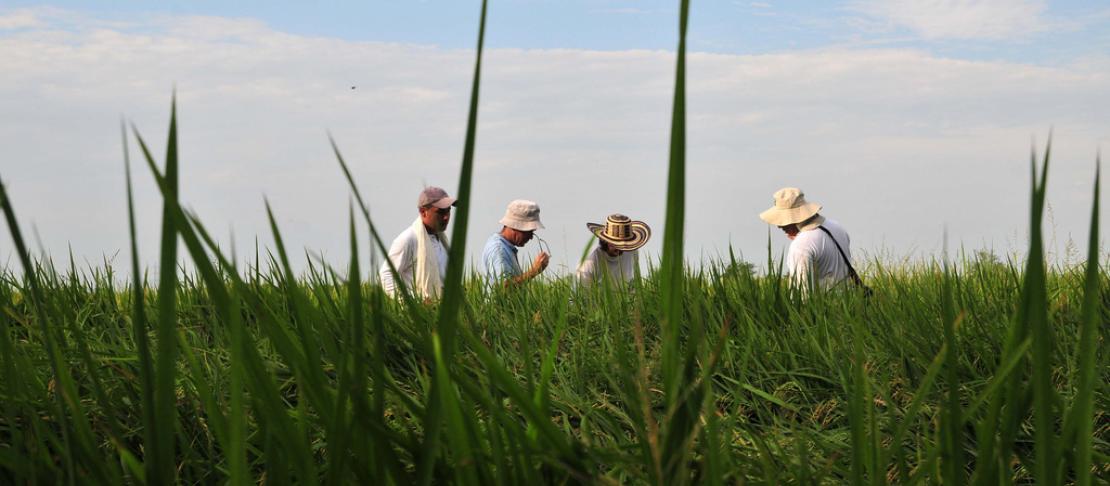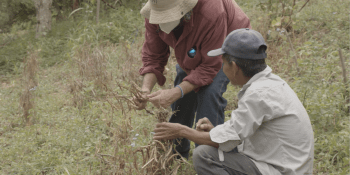Cracking patterns in big data saves Colombian rice farmers’ huge losses

Summary
The research was implemented in collaboration wit the International Center for Tropical Agriculture (CIAT).
In 2014, 170 Colombian rice farmers avoided massive losses by taking the advice of their producers’ federation, FEDEARROZ, not to plant in the first of the two annual growing seasons. The farmers who took the advice avoided economic losses estimated at USD 1.7 million. FEDEARROZ acted on a forecast by a team of young CCAFS scientists based at the International Center for Tropical Agriculture (CIAT). The scientists had mined 10 years of weather and crop data to understand how climatic variation impacts rice yields. The team then fed patterns in climate and yields into a computer model and predicted a drought in the Caribbean department of Córdoba, which led it to conclude that farmers in some regions could save themselves from crop failure by not planting at all.
The ability to analyse masses of crop and climate data to provide farmers with accurate, site-specific forecasts and advice has huge implications, not only for rice, but also for cassava, beans and potato, the main crops in Colombia, and other crops in other countries.
In Colombia, rice production has fallen from around 6 tonnes a hectare to 5 tonnes since 2007. Variable weather from season to season means harvests can fluctuate by 30–40%. Now, based on trends identified by the CIAT-CCAFS data team, FEDEARROZ and government extension services in three regions recommend the rice varieties that work best under specific weather conditions and the best date to plant.
In September 2014, Global Pulse, a UN scheme to harness big data for sustainable development, named the climate-smart, site-specific agricultural decision-making tool one of two winners of the UN Big Data Climate Challenge. Two members of the CIAT-CCAFS team were invited to the UN Climate Summit, where their research was shared with heads of state as well as global business leaders and civil society leaders.
This breakthrough has tangible benefits for farmers. By heeding forecasts and specific recommendations on what, when and how to plant rice in their area they can avoid losses of 1 to 2 tonnes per hectare. This matters because farmers already struggle to remain competitive in domestic and export markets. The price they get for their rice barely covers the costs of machinery, pesticides and fertilizers.
The CCAFS team recognize that the more comprehensive the data they have the better forecasts they will be able to provide. To collect more data, the team developed a mobile phone app for farmers to capture and share information about their farms and their rice, maize and bean cultivation practices. This local knowledge and site-specific information, when fed into the computer model, enables scientists to refine the advice they give. The advice gives farmers an advantage: even as weather conditions become more variable, they can raise production and avoid catastrophic losses.
Key facts
- Colombian farmers have been hit hard by climate change, reducing rice yields from six to five tonnes per hectare over the past five years.
- CIAT scientists analyzed huge data sets provided by FEDEARROZ and the Colombian Institute of Hydrology, Meteorology and Environmental Studies (IDEAM).
- According to the analysis, climate change induced variability accounts for nearly USD 1,000 of value per hectare for rice farmers.
- Big data analysis and advice provided to extension agents allowed rice farmers to avoid USD 1.7 million in drought-induced losses.
Lessons: key elements of success
- The better the data availability, the better scientists can provide accurate and site-specific forecasting.
- The CCAFS team developed a mobile phone app for farmers, to allow them to capture and share local knowledge and site-specific information which can allow the scientists to fine tune their recommendations.
- Site-specific recommendations can provide farmers with knowledge on what, where and how to plant, allowing them to improve their decision making and adapt to climate change.
Further reading
- UN awards big data project for confronting crazy weather in rice production
- Big Data for climate-smart agriculture
Related research outputs
- Wilson-Grau R. 2014. Validation Report: Outcome Stories for CIAT-CCAFS projects in Colombia during 2014.


